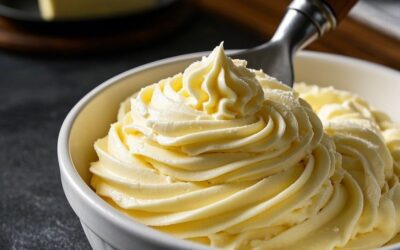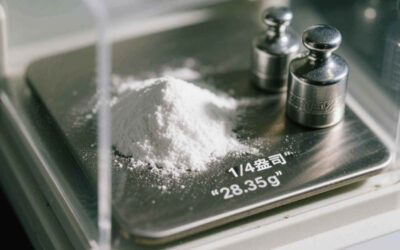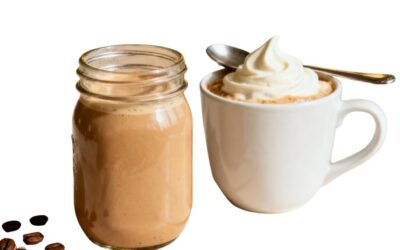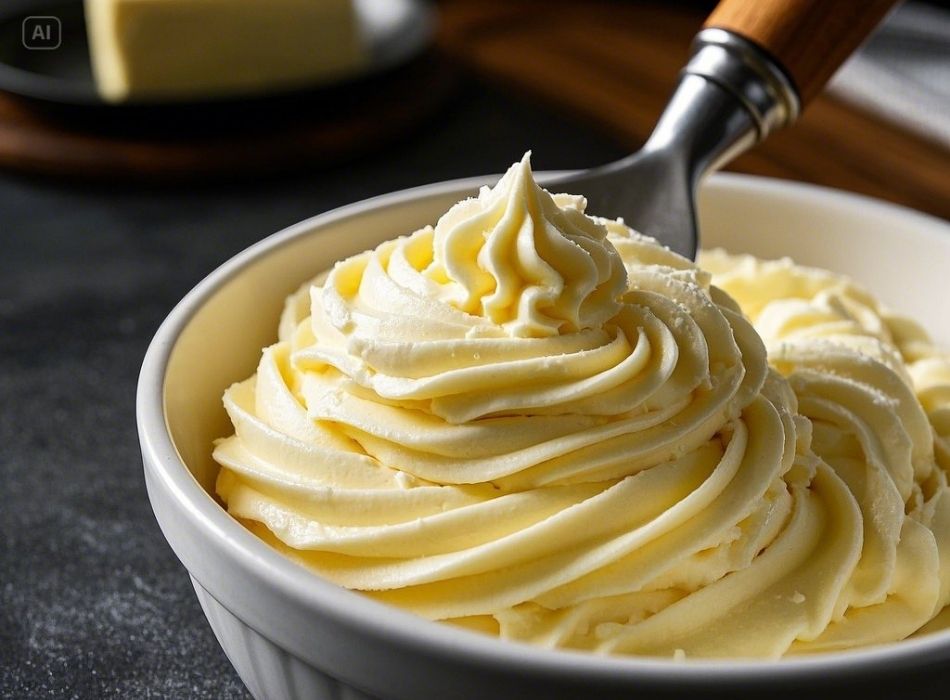Whether you’re an experienced baker or just getting started, one question may pop up after frosting your cakes and cupcakes—is it possible to freeze leftover buttercream frosting? The short answer is yes! Buttercream is surprisingly resilient and can easily be stored for future cakes, cookies, or other sweet creations.
This guide will cover everything you need to know about freezing buttercream frosting, including the dos and don’ts, tips for keeping it fresh, and how to use it after thawing.
Why Freeze Buttercream Frosting?
Buttercream frosting is a versatile, delicious, and essential part of many baked goods. However, it’s also easy to make too much, especially when working on big batches of baked treats. Freezing buttercream frosting offers several benefits:
- Convenience: Save time by freezing leftover frosting for your next baking session.
- Reduce waste: Don’t toss that extra Buttercream! Freezing allows you to repurpose it for future use.
- Budget-friendly: Butter, sugar, and other frosting ingredients can add up. Freezing your leftovers ensures you get the most out of your baking budget.
Now that we’ve established why freezing Buttercream is a wise choice let’s discuss the types of Buttercream you can freeze.
Can All Types of Buttercream Be Frozen?
While most buttercreams can quickly be frozen and thawed, not all varieties perform equally well. Here’s a breakdown of the common types of Buttercream and how they fare in the freezer:

1. American Buttercream
American Buttercream is the most freezer-friendly of all types. Its simple ingredients (butter, powdered sugar, and a splash of milk or Cream) make it a robust candidate for freezing, and the high fat and sugar content keeps it stable while frozen.
2. Swiss Meringue Buttercream
Swiss meringue buttercream can also be frozen nicely, thanks to its buttery consistency. Because it’s made by mixing butter into a meringue base, it may require some re-whipping after thawing to regain its smooth texture.
3. Italian Meringue Buttercream
Italian Buttercream freezes well like Swiss meringue but may need slight adjustments when thawed. Its silky texture can break during freezing but easily comes back with some mixing.
4. French Buttercream
French Buttercream, made with egg yolks, is less sturdy than other options but can still be frozen. Be prepared to re-whip it, as the fat content can separate during thawing.
5. Cream Cheese Buttercream
Cream cheese buttercream is trickier. Freezing is possible, but the cream cheese can separate slightly when thawed, leading to a grainy texture. Re-whipping can help, but the result might not be as smooth as fresh.
6. Vegan Buttercream
Most vegan buttercreams made with plant-based butter or shortening freeze quite well. To avoid texture changes, ensure your ingredients are high quality and freeze properly. Whipping the butter cream before using it can help to smooth out any potential graininess.
7. Whipped Cream
Freezing whipped Cream is not recommended, as it can become watery and separate upon thawing. However, if you have leftover whipped Cream that you’d like to use, try folding in some fresh whipped cream after it has thawed to help restore its texture.
8. Ganache
Ganache freezes well and can be stored for up to three months. When ready, let it thaw at room temperature and stir well before use. If the ganache becomes too thick or grainy after thawing, add a small amount of hot Cream and whisk until smooth again.
9. Fruit Sauces
Fruit sauces, such as raspberry or strawberry sauce, can be frozen in an airtight container for up to three months. Thaw the sauce in the refrigerator overnight before using. Blend the thawed sauce in a blender or food processor before serving for a smoother consistency.
10. Custard
Custards, such as crème brûlée or flan, freeze well and can be stored for up to two months. To thaw, place the custard in the refrigerator overnight. If it becomes too firm after thawing, let it sit at room temperature for 10-15 minutes before serving.
How to Freeze Buttercream Frosting (Step-by-Step)
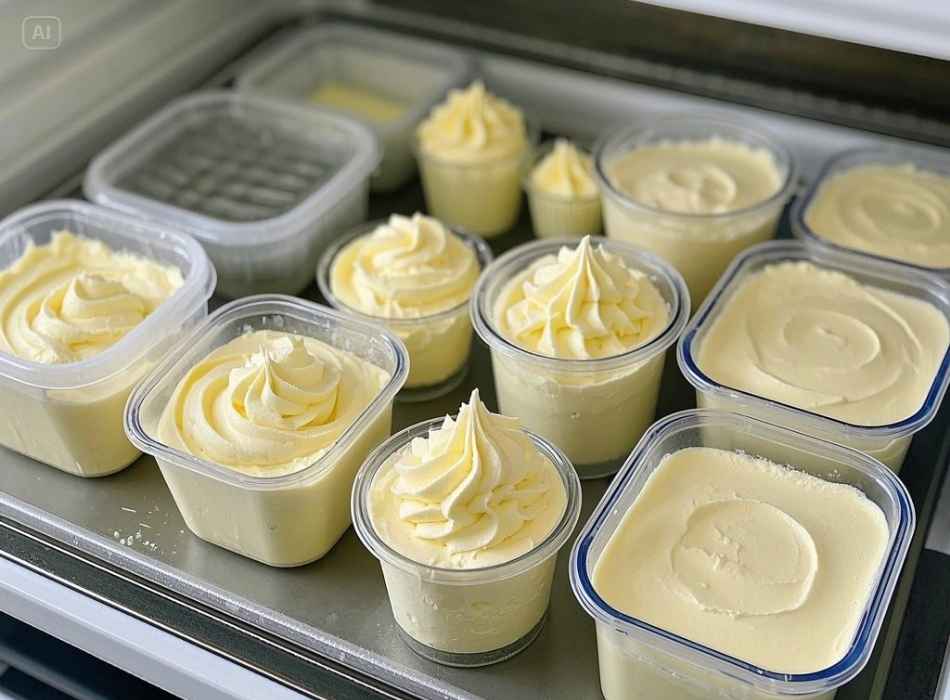
Freezing buttercream frosting is a simple process that requires minimal effort. Follow these steps to ensure the best results:
Step 1: Prepare Your Frosting
Before freezing, ensure your Buttercream is fresh and free from crumbs or impurities. If the frosting has already been sitting out for several hours, refrigerate it first to lower the temperature.
Step 2: Divide Into Portions
If you have a large batch of Buttercream, divide it into smaller portions. This makes it easier to thaw the exact amount you need later and prevents unnecessary waste.
Step 3: Use Airtight Containers
Place the frosting into an airtight container or heavy-duty freezer bag. Remove as much air as possible from the container to prevent freezer burn. If you’re using a freezer bag, flatten it to save space and label it with the date.
Step 4: Wrap Securely
For an added layer of protection, wrap the container or bag in plastic wrap or aluminum foil. This extra step can prevent frost crystals from forming.
Step 5: Freeze
Place the Buttercream in the freezer. Buttercream frosting can be stored for up to 3 months without losing quality. Label the container or bag with the date to know when it was frozen.
Step 6: Thawing
When ready to use, remove the Buttercream from the freezer and place it in the refrigerator overnight. Once thawed, let it come to room temperature before using. It’s important not to rush this process, as rushing can cause condensation and affect the consistency of the frosting. You can also thaw the Buttercream in the microwave at 10-15-second intervals, stirring in between until it reaches a spreadable consistency. However, be careful not to overheat or melt the Buttercream.
Step 7: Reviving
If your Buttercream has become too stiff or dry after thawing, don’t worry! You can easily revive it by adding a small amount of liquid, such as milk, Cream, or even a flavored extract. Start with a teaspoon at a time and mix well until you reach the desired consistency. Be careful not to add too much liquid, as it can cause the frosting to become runny.
How to Thaw and Use Frozen Buttercream Frosting
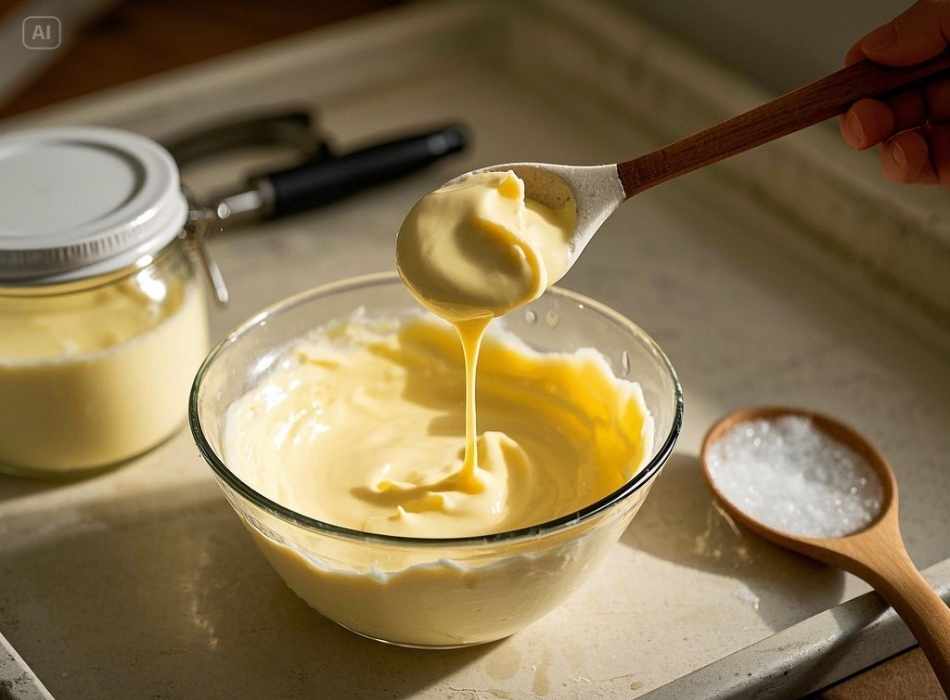
Thawing Buttercream
- Please transfer to the Fridge: Move your frozen Buttercream to the refrigerator and allow it to thaw slowly overnight. This helps prevent condensation from ruining the frosting’s texture.
- Bring to Room Temperature: Once thawed, allow the Buttercream to reach room temperature before using it. Cold Buttercream can be too stiff to spread or pipe. Depending on the temperature of your kitchen, this can take anywhere from 30 minutes to an hour.
- Stir and Re-Whip: After reaching room temperature, stir the Buttercream well with a spatula or whisk to re-incorporate any separated ingredients. Then, use a hand or stand mixer to whip the frosting until it is smooth and fluffy again.
Using Thawed Buttercream Frosting
- Frosting Cakes and Cupcakes: Thawed Buttercream can be used like freshly made frosting! Use an offset spatula or piping bag to frost cakes and cupcakes easily.
- Decorating Cookies: To use thawed Buttercream to decorate cookies, microwave it in 10-15-second intervals until it reaches a smooth and spreadable consistency. Then, use a piping bag or small spatula to decorate your cookies.
- Repurpose as Filling: If you have leftover thawed Buttercream, don’t let it go to waste! It can be a delicious filling for macarons, whoopie pies, or even sandwich cookies.
- Flavor Variations: Thawed Buttercream is the perfect base for adding different flavors. Mix in extracts like vanilla or almond, add cocoa powder for chocolate frosting or fold in crushed freeze-dried fruit for a fruity twist.
- Add Color: Thawed Buttercream can easily be transformed into vibrantly colored frosting by adding food coloring. Mix in a few drops until you achieve your desired hue.
- Freeze for Later Use: If you have leftover thawed Buttercream that you don’t want to use immediately, you can freeze it and save it for later use. Place the Buttercream in an airtight container or zip-top bag and freeze for up to 3 months.
- Use as Cake Filling: Thawed Buttercream is not just limited to cookies; it can also be used as a delicious cake filling! Spread it between cake layers for an added burst of flavor and creaminess.
- Make a Buttercream Frosting Dip: For a fun twist on traditional frosting, try making a buttercream dip! Mix thawed Buttercream with some cream cheese and vanilla extract for a creamy, flavorful dip that goes well with fruits or cookies.
- Try Different Flavors: Don’t limit yourself to just plain vanilla buttercream. Add different extracts or flavorings like chocolate, almond, or lemon to create unique and delicious variations of Buttercream.
- Use as Cupcake Topping: Buttercream is the perfect topping for cupcakes. Swirl it on your cupcakes with a piping bag for a beautiful and delicious finish.
- Use in Cake Decorating: Buttercream is a versatile frosting used for cake decorating. Use different piping tips to create intricate designs and decorations on your cakes.
- Make it Vegan or Dairy-Free: For those with dietary restrictions, Buttercream can easily be made vegan or dairy-free by using vegetable shortening instead of butter and non-dairy milk instead of regular milk.
- Add Food Coloring: Add food coloring to your Buttercream to create vibrant colors for special occasions or themed desserts.
- Use as a Filling: Buttercream can also be used as a filling for layered cakes, macarons, or whoopie pies. Pipe or spread a layer of Buttercream between your baked goods for an extra burst of flavor.
- Make it Fluffy: Try whipping your Buttercream for a few minutes longer for a lighter and fluffier texture. This will create more air pockets and give your frosting a fluffy appearance.
- Add Flavorings: Experiment with different flavorings to add unique tastes to your Buttercream. Some popular options include lemon zest, almond extract, or even coffee.
- Top-Off Cupcakes: Buttercream is the perfect topping for cupcakes, whether pipe it into swirls or smooth it over with an offset spatula.
Re-Whip if Necessary
Sometimes, Buttercream can separate or develop a slightly grainy texture when frozen. To restore its smooth and fluffy consistency:
- Add a splash of milk or Cream (if needed).
- Use a stand or hand mixer to whip the frosting until it’s creamy.
Pro Tip:
If the butter cream seems too soft, put it in the fridge for 10–15 minutes, then re-whip.
What to Avoid When Freezing Buttercream Frosting
Freezing Buttercream is pretty straightforward, but keep these tips in mind to avoid common mistakes:
- Avoid freezers with strong odors: Buttercream can absorb odors like garlic or onion, ruining the flavor. Store it in a separate area or use odor-neutralizing techniques.
- Don’t freeze after storing too long in the fridge: Frosting that is already close to spoiling will not regain freshness by freezing.
- Avoid freezing frosting with delicate add-ins: Frostings with fresh fruit, crunchies, or other mix-ins may not freeze well, as these ingredients can become soggy or lose texture.
Creative Uses for Thawed Buttercream
Once your Buttercream is thawed and ready to use, here are some fun ways to put it to work:
- Frost a new batch of cupcakes for a quick, impressive dessert.
- Decorate cookies with colorful designs.
- Use it as a filling for macarons or cakes.
- Spread it on graham crackers or vanilla wafers for an easy treat.
- Add a dollop of pancakes or waffles for a decadent brunch twist.
Save Time, Money, and Frosting!
Freezing buttercream frosting is a game-changer for home bakers, baking enthusiasts, and even beginners. It’s a simple way to reduce waste, save time on future bakes, and make the most of your delicious creations.
The next time you have a surplus of sweet, buttery goodness, don’t hesitate to store it in the freezer and enjoy it later.
Happy baking, and may your frosting always be perfectly whipped!










